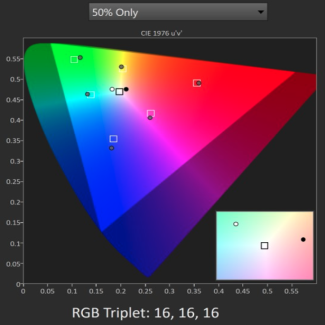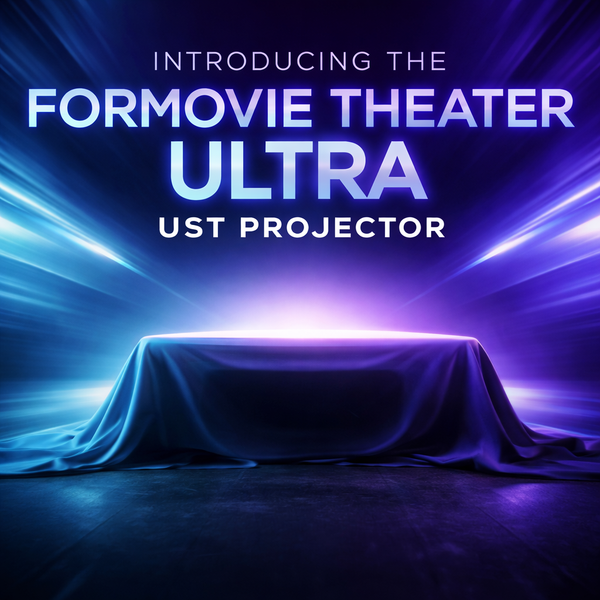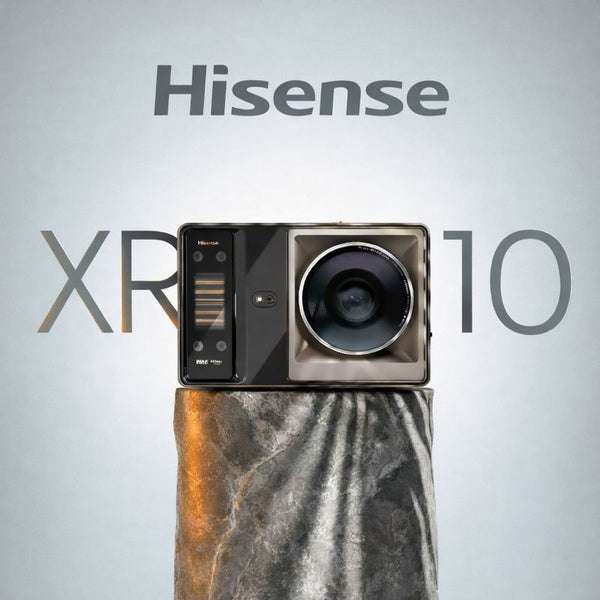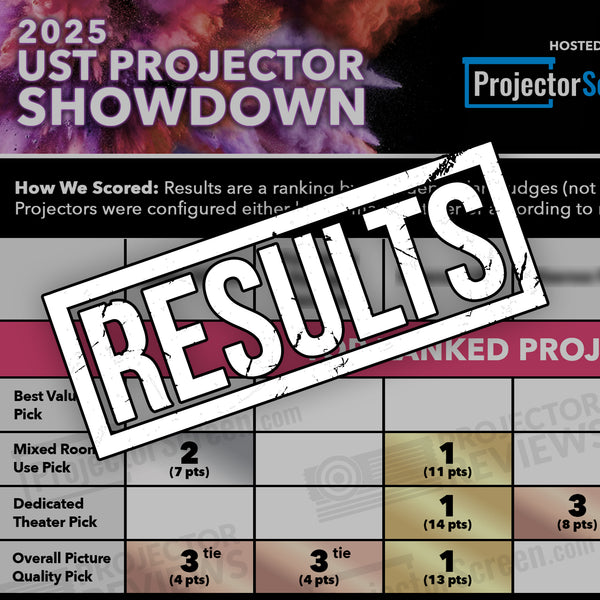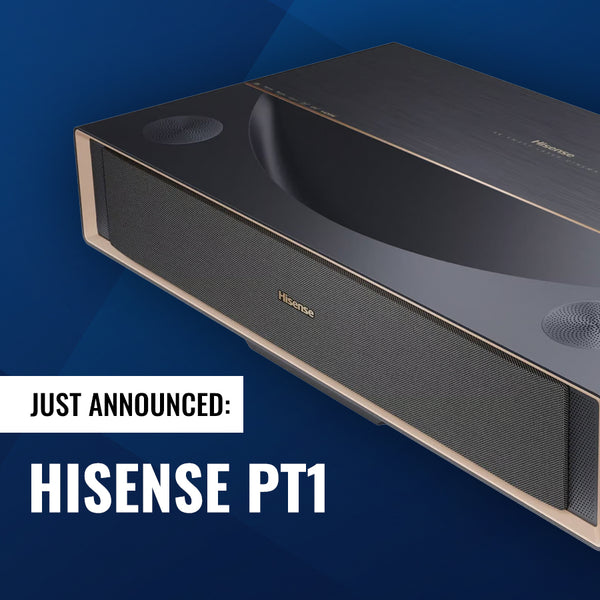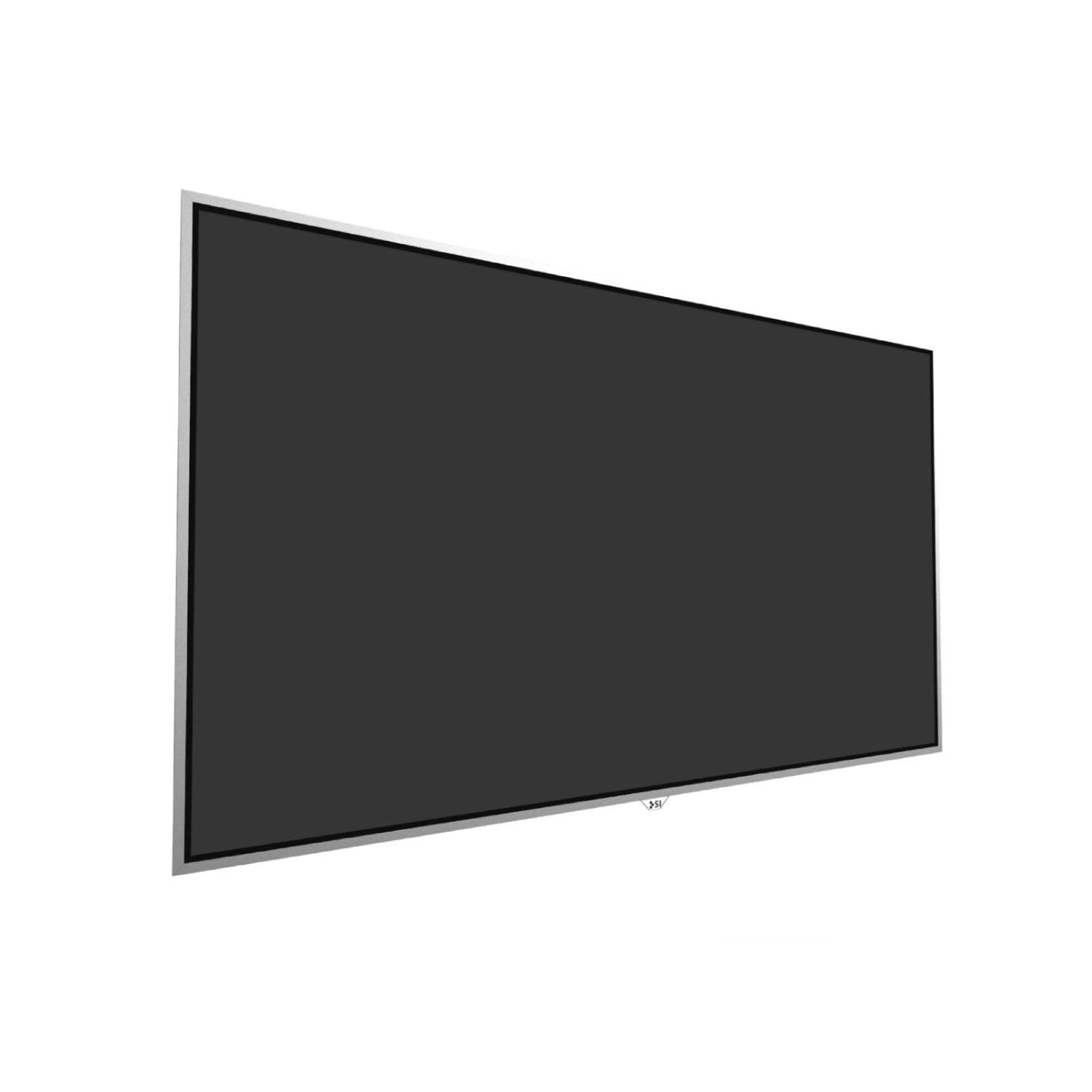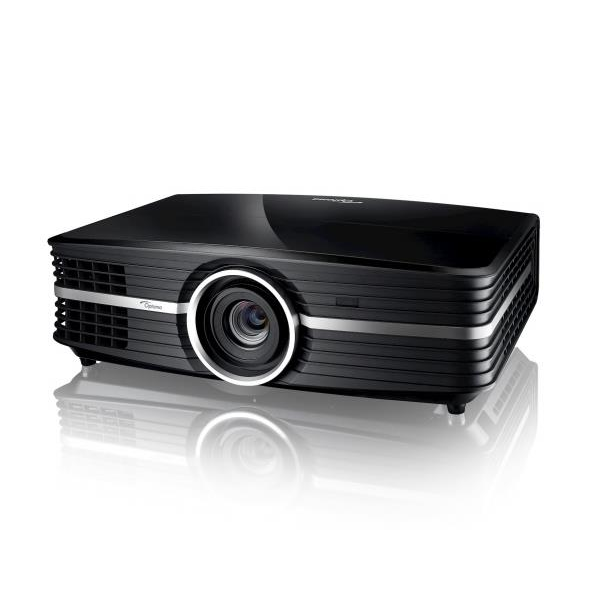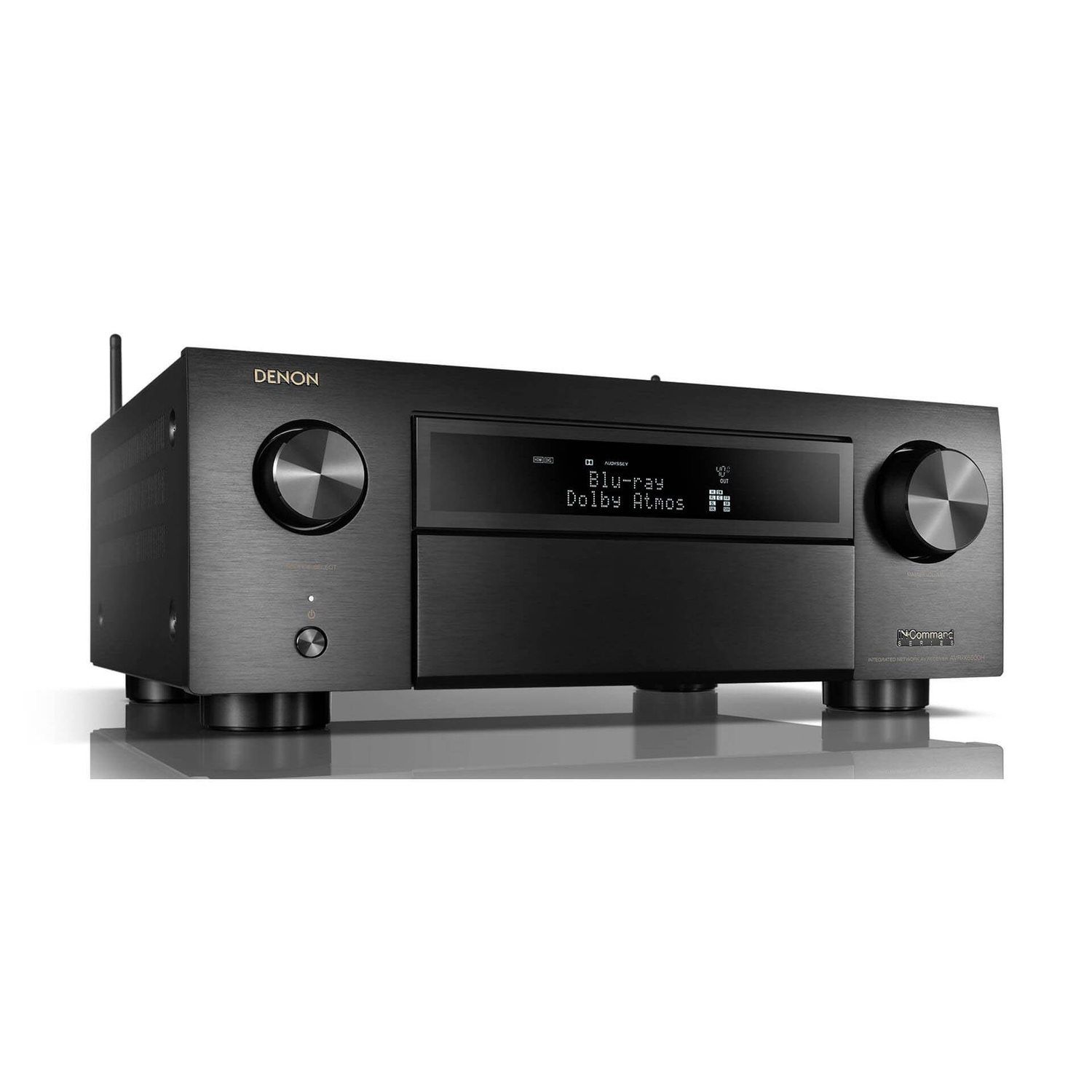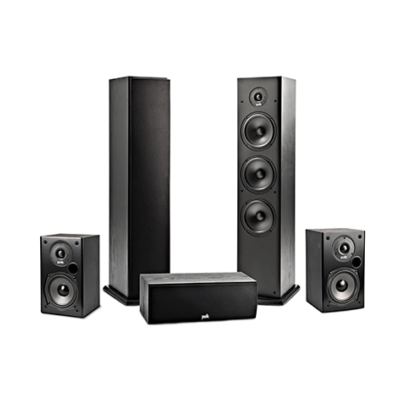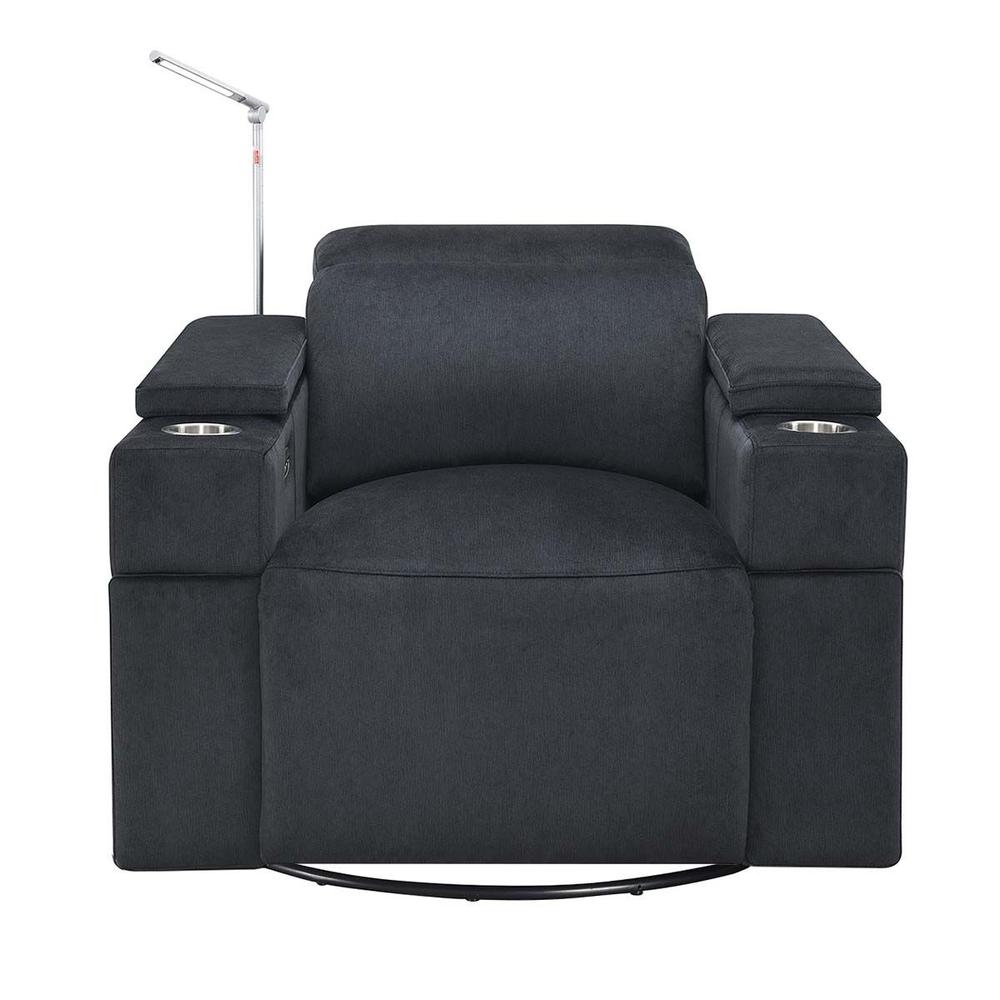Epson LS11000 3-LCD 4K Projector Review
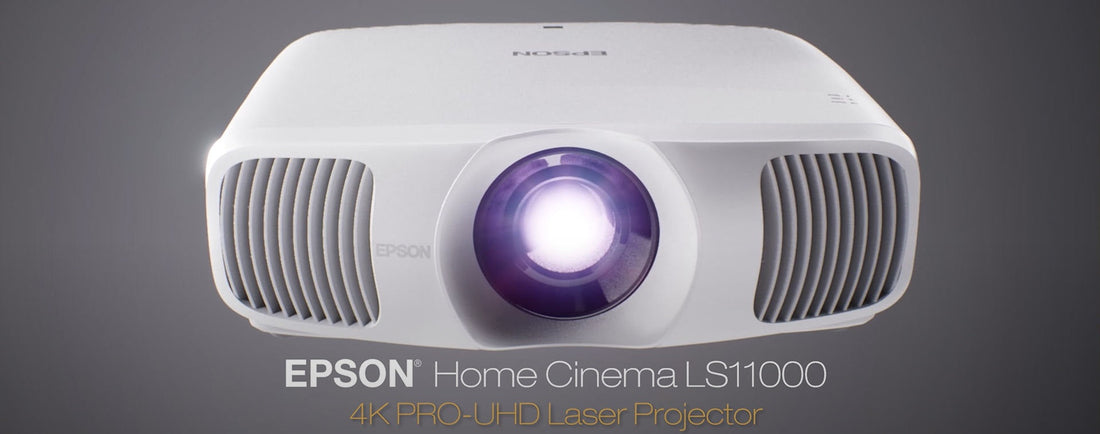
Highlights
The Epson LS11000 features cutting-edge technology. It uses Epson’s proprietary 4K PRO-UHD technology and a proprietary Epson Picture Processor to produce a full 3,840 x 2,160-pixels on-screen to faithfully reproduce and display your movies, TV shows and gaming, all the way it was meant to be experienced, with amazing picture sharpness, detail, brightness, contrast and color performance.
The LS11000 is great for gaming and it works alongside all of the latest generation of game consoles and gaming PCs, delivering an incredible gaming experience all the way up to 4K HDR at 120 frames per second. Offering input lag times at 20 milliseconds and below. Epson says this projector could be the best gaming projector they’ve ever made.
After my experience with the Epson Home Cinema LS11000, it appears to be able to transform any appropriate room into an ultimate UHD home theater movie and gaming experience.
- Extremely sharp, clean and detailed almost DLP-like image while maintaining its cinematic image.
- Dynamic Mode does full fade to black and produces the best dynamic contrast of all the modes.
- Blue Laser Phosphor light engine for a more stable image and long life of 20,000+ hours, depending on modes used, as compared to a UHP or similar Lamp.
- Uses a fixed yellow phosphor element instead of a spinning phosphor wheel to create diffuse white light used to split into its RGB Primaries.
- Three separate and distinct 0.74” LCD imaging chips, one each for the Red, Green and Blue primaries. This alleviates any chance for Color separation artifacts, aka the “Rainbow Effect” (RBE), which you get with single chip DLP and their spinning color wheels. It also allows for full color brightness.
- No laser speckle artifacts like you can get with pure RGB lasers.
- 2,500 ANSI Lumens brightness, which is more than its competition
- Upgraded 4-way eShift pixel shifting technology to show true 4K addressable resolution on screen compared to its predecessor which used a 2-way eShift with an effective 3K resolution on screen.
- Supports Dynamic HDR10+
- Pseudo HDMI 2.1 support, up to 40 Gbps instead of the fully spec’d 48 Gbps, allowing for 4K at 120Hz.
- Great Gaming input lag at ~20 ms or less.
- Motorized Lens Shift/Focus/Zoom
- Great value at $3,999 MSRP as compared to other laser phosphor based, 3 chip technology projectors from the likes of Sony and JVC.
- No 3D Support as you get with prior models
- No Dynamic Tone Mapping built-in.
- Color gamut capability is the same or better than other similar projectors without color filters engaged, but could be wider if they added a color filter. Other, newer Ultra-short throw projectors now feature true RGB Laser designs which support a full BT.2020 color gamut, which some UHD Blu-Rays take advantage of. This is getting more and more important for future proofing, if nothing else.
- Built-in Test Patterns engage when performing Grayscale and Color Management Adjustments. Have to hit ENTER again to view the external source, but the menu still persists, can get in the way and it affects meter readings.
- Not as bright as the prior 5050UB
- Doesn’t use native 3840 x 2160 “4K” UHD Imaging Panels like its LCoS/SXRD Counterparts.
- Continue with white only chassis without a black option for users with dedicated home theaters.
The Epson LS11000 comes packed with the following features
4K PRO-UHD Advanced Pixel-Shifting Technology
Advanced new quad 4 way pixel-shifting works together with the three separate RGB LCD imaging chips without sacrificing image sharpness and brightness
Precision eShift Optical Glass Plate Technology
Digitally controlled, unique Precision eShift Optical Glass Plate which precisely refracts the light from the pixels to display a full 4K/UHD 3840 x 2160, 8.3 million pixel image on screen to provide an incredibly detailed, sharp and clear picture, no matter the source
Epson Proprietary ZX Picture Processor
The LS11000 sports a powerful 36-Bit video processing technology. The proprietary Epson ZX Picture Processor is used to process real-time color, brightness, contrast, HDR, frame/motion interpolation and resolution scaling and enhancement
Blue Laser Phosphor Light Source Array
True multi-array blue laser diodes are the perfect source to light up Epson’s one-of-a-kind, RGB 3LCD projector’s light engine for awesome image brightness, black levels, contrast and color gamut accuracy
Picture Brightness Above the Competition
Incredible peaks of 2,500 lumens for both color and white brightness for an exceptionally bright picture in just about any home theater, gaming or media room environment. Enough for rooms even with some ambient light
Projection Engine with a True 3-Panel, 3LCD Design
Advanced 3LCD technology utilizes three separate LCD panels to display the entire RGB color signal continuously for each and every video frame, unlike single chip DLPs using sequential color via a color wheel. This provides an accurate color gamut brightness without rainbow effect or lack of color brightness seen with DLP’s technologies
Impressive HDR
Using full 10-bit HDR color processing, it accepts 100% of the HDR source content to reproduce HDR, HDR10+ and HLG (Hybrid Log Gamma) content faithfully for amazing visual performance. The LS11000 features a 16-step, real-time HDR curve adjustment to control and fine-tune its HDR performance no matter the high dynamic content
120 Hz Refresh Rate
With its HDMI 2.1 support, you get refresh rates up to 120 Hz which gives you smoother motion for supported content also providing the option for impressive Frame Interpolation for content below 120 Hz
Impressive Contrast
The LS11000 takes total advantage of its Blue Laser Phosphor Diode Array to reduce the stray light within the light engine to increase the image contrast, producing an incredible Dynamic Contrast Ratio that exceeds 1,200,000:1
Proprietary Cinema Lens by Epson
Epson Designed their lens for the LS11000 for no light leakage. Epson’s Cinema Lens uses a proprietary, multi-element, precision all glass design for outstanding picture detail, clarity and sharp focus uniformity from the lens, edge-to-edge
Fully Motorized 3-Way Lens
To make installation simple, Epson includes a 3-way motorized lens system so you can shift the lens up to +/- 96% horizontally and up to +/- 47% vertically without picture geometry distortion or any loss of detail. With the motorized lens you can also set zoom and focus electronically with the remote and then store all the settings in one of the ten lens memory presets for easy recall
Scene Adaptive Correction in Real-Time
Powered by Epson’s ZX Picture Processor, you have the option to adjust the image quality automatically based on the actual scene information itself. This is an easy way to provide impressive brightness, color and contrast, no matter the original content being rendered
HDMI 2.1
Support for the full 40 Gbps bandwidth to accept an uncompressed 4K HDR signal up to 120 Hz. This also comes with ARC and eARC support which allows for compatibility with the newest AV receivers and next-generation gaming consoles and PCs
Incredible Gaming
You can game at up to 4K resolution at 120 frames per second with awesome input lag times below 20 ms. This allows intense video gamers to take complete advantage of the newest and latest generation of gaming consoles or higher-end gaming PCs
Warranty and Support
Epson provides a standard 2-year limited warranty on the LS11000 and comes with a 2-business-day, full-unit replacement which includes free shipping. As before, all Epson Home Cinema projectors come with free lifetime technical phone support as well
The Epson LS11000 In Action
(Filmed in Dynamic mode)
Aesthetics
Epson continues with the white chassis color in its Home Cinema Line. They have slightly altered the design, keeping the air vents to the far left and right sides, but now taking up the full height of the front chassis. It now features a nice textured casing as opposed to the 5050UB’s smooth surface. Thankfully the excellent motorized lens cover has been maintained.
The various connectors and ports are still in a nice recessed area at the back of the LS11000, along with some of the most important control buttons that you may need for basic operation without the remote. These were previously located on the side, behind a sliding trap door next to the power button, which is also in the same spot now on the LS11000.




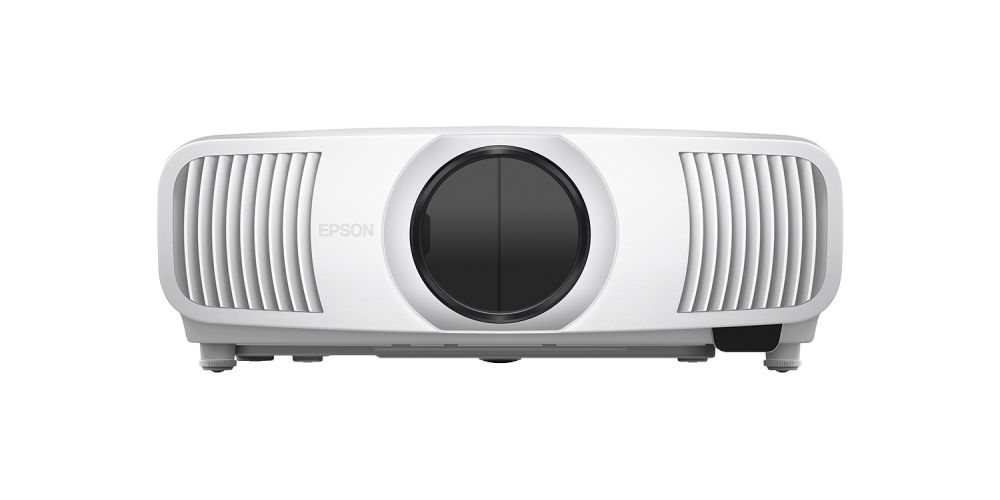
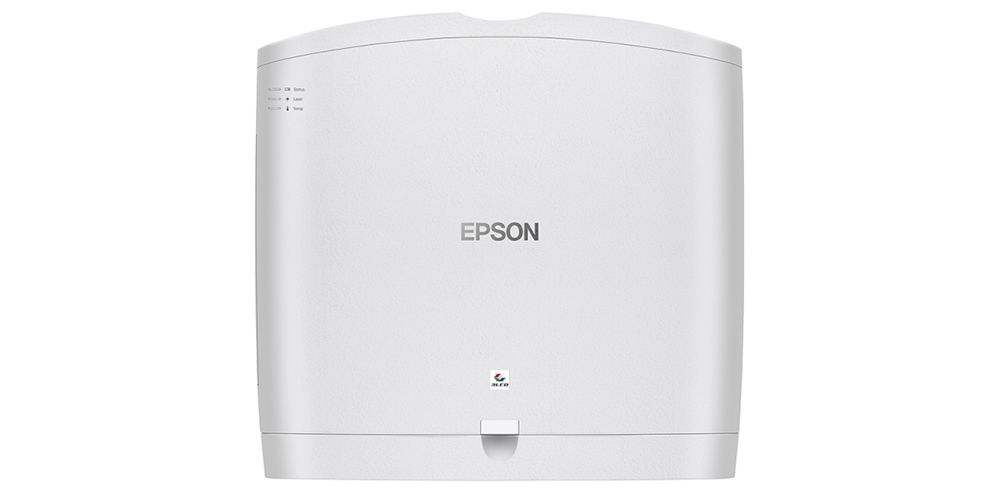
Installation/Lens Info
Lens Type
- Epson VRX Lens: 15-element precision glass structure (AGS)
- Powered focus/optical zoom/lens position
- F-number: 2.0 – 3.0
- Powered Lens Cover and slide lens shutter
Throw Ratio Range
- 1.35 – 2.84
Zoom Ratio, Powered
- 1 – 2.1
Lens Shift, Powered
- Vertical: -96.3% to +96.3% (H center, powered)
- Horizontal: -47.1% to +47.1% (V center, powered)
Keystone Adjustment
- Vertical/Horizontal: ± 30 degrees
Laser Light Source
The LS11000 utilizes a blue laser phosphor array light engine paired with a static yellow phosphor element with a life expectancy of at least 20,000 hours. This is dependent on the laser power selected and the modes used throughout its lifetime.
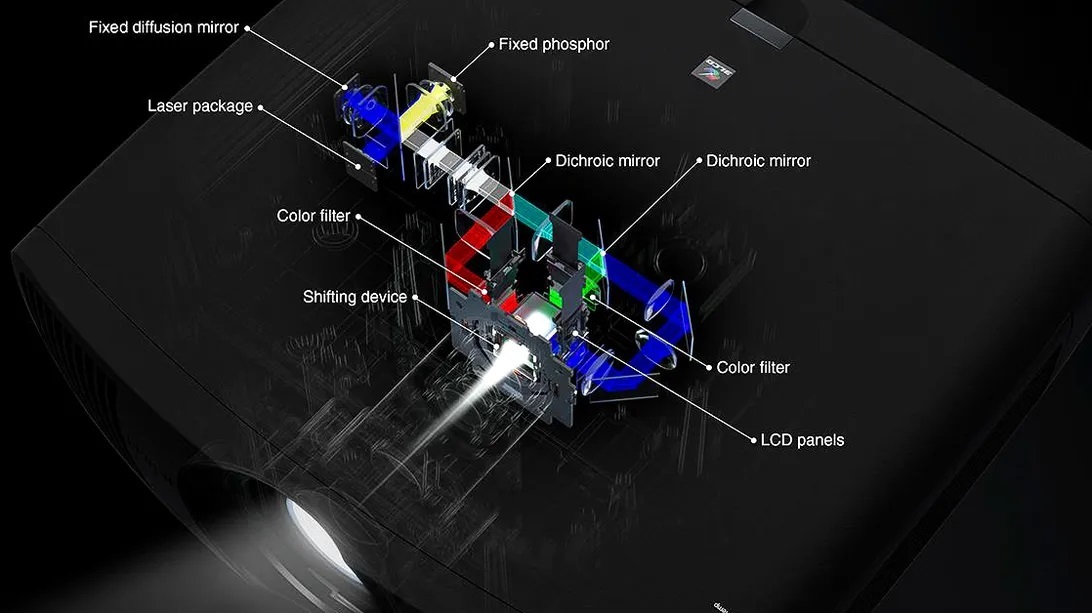
Brightness
This Epson LS11000 boasts both a color and white brightness of 2,500 ANSI lumens making it perfect for rooms with some ambient light, such as a living, media or TV room. If you pair this with a proper Ambient Light Rejecting (ALR) screen, you should be able to get a respectable image on screen even with ambient light.
With ambient light from light fixtures and windows, as in a typical living room environment, the LS11000 when paired with an ALR cinema screen, has enough lumens to punch through normal ambient lighting conditions. I tested it on both an ALR screen with lights on and a plain white, neutral gain screen in a darkened environment. In the ambient light on an ALR screen instance, the image was more than watchable and the image was still discernible as far as colors, contrast and sharp image fidelity. The ALR screen is by far the best choice when in this non-ideal situation.
With lights off on a white screen in a dedicated, light controlled environment, the projected image takes on a whole new dimension of colors, sharpness and depth as expected. This projector is easily the best performer in its class with its blue laser light source lighting up its three discrete LCD imaging chips. It provides beautiful, near DCI-P3 colors, rendering UHD HDR Blurays and Video Streams with rich, delineated colors that you’d be hard pressed to tell were only about 90% of the full specification. When compared to true RGB Laser projection technologies I have experienced recently such as almost all newer and higher end UST projectors, the LS11000 holds its own when you see the vibrant colors it reproduces. This projector has a very cinematic image with great contrast in Dynamic Mode, resulting in depth, sharpness and a detailed 3-dimensional image, especially with movies. A standard white screen is your best choice if you plan to install this in a dedicated, light controlled environment. There is no need for an ALR or gray screen, as you may want to use with a low contrast, single chip DLP projector.
Color Gamuts
The Epson LS11000 uses a blue laser with yellow phosphor design, as discussed, integrated with various dichroic mirrors and filters, which allows it to achieve ~90% of the DCI-P3 color space. Epson could have achieved full DCI-P3 color gamut levels if it had decided to employ a color filter in the light path, but it appears they’ve chosen to leave that option out as it can really steal a lot of lumens. Still it would have been nice to have the option to choose, but of course this would have added to the cost. DLP competitors also using blue laser phosphor employ a yellow phosphor wheel instead of the static one as used in the LS11000. This increases the noise level of their projectors and is not as ideal in a home theater environment giving the LS11000 an edge.
Overall the colors on the new Epson laser home theater projector look fantastic, even out of the box. After calibration the colors still appeared to be bright and vivid.
Color Gamut Sweeps (Out-of-the-Box)
Contrast
This Epson LS11000 is advertised with an impressive contrast ratio. They say they’re taking full advantage of the Laser Array Light Source and are able to suppress stray light within the signal and enhance the picture contrast to produce a Dynamic Contrast Ratio exceeding 1,200,000:1, but remember to always take manufacturer’s claims with a few grains of salt, as you would any other ridiculous contrast marketing claim. That being said, the black levels and contrast this projector produces are better than any other projector in its price range and class.
Without a doubt the best mode to use is the Dynamic Picture Mode, in either Normal or High Speed Dynamic Contrast configuration. We suggest High Speed to get the absolute best contrast performance from the LS11000. This high of a contrast ratio will give you a very high dynamic range image and make it look almost three dimensional and make the colors seem to pop more. It is also known that high contrast images appear sharper to the human eye than lower contrast ones. In very low APL (average picture level) scenes, this is where high contrast ratios earn their keep, being able to go down low and show near true black images along with being able to show great shadow detail so you can see object details in the lowest of light levels.

The reason that Dynamic Mode is giving us so much more of a high contrast image than the other modes is because the only thing it appears that Epson is doing with the various modes is lowering the laser power and changing their “mixture” together to change the color temperature and look to each mode. In Dynamic Picture Mode using a High Speed Dynamic Contrast setting, the LS11000 is outputting at its maximum laser level possible, combined with going to full laser dimming and absolute laser shutoff, which results in the best contrast ratio, as you can see below. Normally and historically in the past, namely with lamp based projectors, one wouldn’t want to come close to EVER using dynamic picture modes. Now what I have noticed, especially with the RGB laser models as those used in the latest USTs, since the lasers are not only used for the brightness of the light source, but the colors themselves, it seems you can now tame this mode enough to make it usable and within tolerance (in most instances), while maintaining as high of a laser power output as possible for each color. In days past, cranking up the lamp power caused all sorts of things in the image to get overdriven, and it was hard to clamp down the black levels so many things were compromised, including contrast. This appears to no longer be the case with laser based projectors. I believe many reviewers still hold to this outdated theory and just never even try to see if they can do something with these dynamic modes on the latest laser projectors, holding onto their old SDR Lamp based paradigms.
Our motto is, if the contrast, brightness and other factors are there and it can still be calibrated to imperceptible levels, why not use it??? Your on screen image will thank you!
Measurements were done using CalMAN calibration software with a SpectraCal C6 HDR2000 colorimeter and a SpectraCal VideoForge Pro test pattern generator.
Contrast Ratio
On/Off (*All Modes Uncalibrated using 100% laser power)
DYNAMIC
- Dynamic Contrast Off = 2,019:1
- Dynamic Contrast Normal = 223,610:1
- Dynamic Contrast High Speed = 227,941:1
VIVID
- Dynamic Contrast Off = 1,490:1
- Dynamic Contrast Normal = 4,388:1
- Dynamic Contrast High Speed = 6,751:1
BRIGHT CINEMA
- Dynamic Contrast Off = 1,380:1
- Dynamic Contrast Normal = 4,139:1
- Dynamic Contrast High Speed = 6,000:1
CINEMA
- Dynamic Contrast Off = 1,360:1
- Dynamic Contrast Normal = 4,125:1
- Dynamic Contrast High Speed = 6,238:1
NATURAL
- Dynamic Contrast Off = 1,350:1
- Dynamic Contrast Normal = 4,139:1
- Dynamic Contrast High Speed = 6,181:1
ANSI (*DYNAMIC MODE)
- 124:1 (Dynamic Contrast Off and Scene Adaptive Gamma Off)
- 140:1 (Dynamic Contrast on High Speed and Scene Adaptive Gamma Off)
Sharpness, Detail, Clarity
The lens used on the LS11000 is said to be a new design from Epson and it is of exemplary quality, even better than the one used on the 5050/6050UBs, rendering UHD 4K HDR content with clearly defined pixel structure that is easily visible on screen, with uniform focus across the screen from corner to corner. The big test that it passed with flying colors is the single pixel pattern, where it clearly delineates each white and black line of the image with no blurring or errors due to the 4 way, quad eShift pixel shifting process. This is a great feat for a non-native 4K imaging panel using trickery such as eShift to get the same effective resolution on screen. The 4K image on screen in real world content is very highly detailed and sharp, as this tough test pattern bears out. There wasn’t any chromatic aberration noticed, especially at normal seating distances.

Sharpness in displays is usually a rudimentary edge enhancement processing feature which, if not done well, can result in severe edge outlining, especially on straight lines and the outlines of objects in the image. This is known as “ringing” or “haloing”. Very few manufacturers and displays do sharpness in a helpful way which makes the image appear to have more detail or sharper lines without distortion. A good example of doing it right would be DarbeeVision, which if used judiciously makes the image appear more detailed, 3-dimensional and with more contrast without causing white lines (ringing) around objects. Sony’s Reality Creation is that and so much more.
The LS11000 gives a sharp detailed image without ringing:

One thing we can immediately see with the LS11000 is that it has a great optical engine which produces a sharp picture with a very high level of detail for an LCD projector. The better contrast this LCD gives versus its single chip DLP competition provides a depth to the image that is not seen on the DLPs. You would have to step up to the much more expensive LCoS and SXRD units from JVC and Sony to get this level of native and dynamic contrast on screen. The focusing is near razor sharp, almost to the level of those single chip DLPs, without looking overly sharpened or enhanced digitally in any way. This doesn’t only apply to HDR 4K UHD content. SDR video images from streaming or cable TV can also take on an almost 3D appearance in some scenes, which is ironic as this model has removed its 3D functionality. Along with its great sharpness and detail, it also provides a very cinematic film-like look as many LCDs can do, which is one of their benefits that many espouse. This complete look that the LS11000 presents gives it a very unique image compared to its competition and sets it apart. You could easily mistake what you see for a much more expensive, higher-end model.
Motion Handling
There is a Motion Interpolation or MEMC (Motion Estimation/Motion Compensation) adjustment in the menu of the LS11000. It is called FRAME INTERPOLATION and you can use this judiciously if you find this projector’s native motion less than ideal. It has four settings, OFF, LOW, NORMAL and HIGH. It is said that it “Adjusts the smoothness of image movement” and it is “only available when Image Processing is set to Fine in the Signal I/O menu and 4K 100/120Hz signals are not being projected.”
The LS11000 projector’s motion is set to interpolate from frame rates such as 24p for films to 60p by default in its menu system. It does this very well with no trails behind objects in motion, known as “ghost images”, with minimal, if any, blurring. This is set to HIGH by default, which does cause some of what is known as the “Soap Opera Effect” (SOE). This is what people refer to when the movie takes on a less than cinematic feel to its motion and looks more like a scene from your favorite daytime soap opera recorded on video for TV. Movies are almost always and have historically been shot at 24 frames per second and displayed by flashing each frame of film twice in the film projector at your local cineplex. This results in a certain “cinematic” look that most still prefer when watching movies as opposed to TV shows.
I found the best compromise on the LS11000 is to set it to its LOW setting, which results in removing some of the judder seen with most films at 24p, without giving you any SOE.
Some good examples to test this are ones that show car chase action sequences in movies with the cars zooming by horizontally across the screen as the camera pans along with them, as well as similar action scenes.
Imaging Technology/Chipset
The LS11000 and its higher end sibling, the LS12000 (which we will review later) are the first LCD projectors that aren’t single chip DLPs to use a new 4 way, quad pixel shifting design with a native 0.74”, 12 Bit Poly-silicon TFT Active Matrix 1920 x 1080 LCD panel, which results in 8.29 million discrete pixels on screen. The prior generation’s models such as the 5050/6050UBs, used a two way shifting eShift design resulting in only about 4 million plus pixels on screen and a less sharp and detailed image than their native 4K competition or now these new models. This new design is used in the eShift configuration to allow 4K UHD rendering on screen without using a native LCD panel with 3840 or 4096 x 2160 resolution like Sony and JVC uses. This decision is most likely what gives us the great lower pricing of this model compared to those Sonys and JVCs, making this the incredible value that it is.
Bravo, Epson! Although I do still believe they should also design a higher end, elite version with native 4K UHD panels and using their, in my opinion, superior rLCD (reflective LCD) technology that they used previously with their LS10000 and LS10500 projectors.
Gaming Input Lag
The LS11000 does not feature a dedicated Game mode, which normally would disable the projector's processing as much as possible to provide low-latency response for serious gamers, of which I am not. If you are a gamer though, the native input lag on the LS11000 may be considered one of the very best, even compared to those dedicated gaming DLPs, at 20ms or less. This shouldn't bother even the most serious of gamers. If you are a first-person shooter, you will find it very pleasing for a projector at this speed.
Adding in good motion handling does help make this work better for even the most avid gamers amongst us. The LS11000 renders 4K gaming graphics quite nicely, sharing the native cinematic look of this projector with movies, making it a treat to use with games with a very low input lag so you can remain competitive.
While there’s no dedicated Game Mode, to get the lowest input lag you have to select “Fast” instead of “Fine” for image processing mode.
Built-In Sound
The Epson LS11000 does not have any built in speakers. It does offer eARC functionality on its HDMI 2 input.

Projector Remote Control
The included remote is a bit bulkier than we’d typically like to see. It has a button for pretty much every menu item you’d need.
The LS11000 comes with basically the same remote that their older Home Cinema and Pro Cinema projectors have come with over the years. The remote for this projector looks and functions very similarly to the remotes for many other projectors from Epson, such as the 5050UB and 6050UB. It is the long, dark gray rectangular one with back lighting with many of the direct access to features buttons you can hit so you don’t have to dig into many layers of the menu just to find and use them.
Streaming Applications
Epson does not feature any SmartTV functions or Streaming Applications with this line of projectors. You would require an external streaming box such as an AppleTV, nVidia Shield or other GoogleTV/Android device, Roku, FireTV, etc.
User Interface and Menu System
The User Interface and Menus are a new design compared to their prior 5050/6050UB projectors, with a whole new menu tree that functionally is much better and more easily navigated than its predecessor. Using the remote to run through the menus is a more pleasant experience than I recall on the older models, with each of the parameters grouped into their respective areas and named according to their functions, such as Image, Signal I/O, Installation, Display, Operation, Management, Network, Memory and Initial/All Settings.
I did find some menu quirks which annoyed me though, such as the menu box not minimizing to the bottom or sides when adjusting the parameter you’re working on, like grayscale or RGBCMY Color Management. This can affect the color or luminance readings and get in the way of your color meter and is not optimal for anyone who tries to calibrate this model or its higher end sibling the LS12000.
Also, when you are in the the White Balance or RGBCMY menu modes to make these adjustments, when you first go into a settings menu such as Red CMS Hue/Brightness/Saturation, it brings up an internal pattern for that color, but it is at 100% and the menu doesn’t move away for easy readings. This doesn’t bode well for those that want to use an external pattern generator such as the SpectraCal VideoForge Pro we use here so you can calibrate the color saturation sweeps from 0 to 100%. It wasn’t until I did some digging that it was found out that you can hit the ENTER button on the remote again to get rid of the internal pattern and once again show the external image to allow this type of advanced color calibrations. There should be a note that comes on screen telling you that you can do this to bypass the internal patterns.
Connectivity Ports
- 2x HDMI 2.1 (40Gbps Max.)(HDCP 2.3); HDMI 2 supports eARC/ARC
- 1x USB Type-A (for optical HDMI cable 300 mA maximum power supply only)
- 1x USB Type-A 5 V, 2.0 A for power and firmware
- 1x Mini USB (service only)
- 1x LAN RJ45
- 1x RS-232c
- 1x Trigger out (On, Off) 12 V DC, 200 mA maximum
The Epson LS11000 has very good connectivity, though we always like when projectors have at least 3 HDMI ports. It’s great that both ports are HDMI 2.1.
Picture Modes
Dynamic
- This mode seems to have the most aggressive dynamic laser dimming of all the color modes on the LS11000. It allows peak white and a full fade to black when a 0% black pattern or scene transition is displayed, which the other modes don’t do. It also provides the very best contrast of all the modes. For these reasons, amongst others, this is the mode we used for HDR Calibrations and viewing.
- This mode on other displays usually creates a very green/ blue image as they are the two primary colors that give the most brightness. On the LS11000, the color temperature is actually able to be tamed, at least in the low end where it counts before rolloff with HDR content. This is most likely due to it using all three panels and primary colors to create white and color brightness equally and Epson not completely overdriving them needlessly to impress potential unknowing buyers in a demo environment. This is good because now I can use this mode as a critical calibration and viewing mode for HDR, with enough tweaking to bring it into line and it gives me maximum brightness to enhance the specular highlights for a better “HDR Look”, appearance and overall performance.
Vivid
- Usually best for bright environments such as board rooms, rooms with many windows or light fixtures. Graphic presentations to highlight colorful charts, Slideshows, etc.
- It boosts up the peak brightness and over saturates the colors to make them “pop” in bright rooms.
- Normally looks overly bright and peaked with vibrant, unnatural colors, especially in SDR.
Bright Cinema
- Best for rooms with more subtle ambient light, such as sconces on dimmers, but nothing too overpowering that would wash out the screen. Good for non-critical movie, sports and TV watching, where you may want some ambient light to multitask or to interact with other people.
- This mode basically just boosts up the blue to give a more cool looking presentation that is more pleasing to the eye, and also helps overcome the small amount of ambient light. Black levels may be slightly elevated as well.
- Looks similar to the Cinema mode, but with a cooler, more green/blue image giving higher brightness, to help alleviate the effects of room lighting. It has a more natural tone to it than Vivid Mode. Gamma is generally a lower value, usually 2.0 or 2.2, which brightens the lower end and mid-tones.
Cinema
- This is the mode for the serious home theater enthusiast who watches in a dedicated, light controlled blacked out room and wants the image to be rendered as close to the film maker’s intent as the manufacturer allows.
- This is the most accurate mode with colors and grayscale before any calibration. The Cinema Mode is supposed to preserve the creative intent of the content creator.
- This mode should defeat much of its processing in the projector and is supposed to be factory calibrated closest to the standards, without being overly bright or clipped in either the high or low ends of the spectrum.
- This mode looks more “cinematic, celluloid and film-like”, to some it seems flatter and less dynamic in its default settings. It is the least bright of all the modes. Colors seem more muted than other modes, but in reality are closer to the standards.
Natural
- This mode is most similar to the Cinema Mode in look and presentation.
- It lowers or defeats much of the processing to present a more natural, less digital image.
- It is the closest to the industry specifications out of the box.
- It would’ve been my go-to mode for viewing and calibration if it had the same peak white and full fade to black functionality as Dynamic Mode. With more time I am sure I could have found that perfect “HarperVision” combination of settings and tweaks to provide me with these features in this mode.
Out of the box
When you first measure the LS11000 in HDR Mode, you see the normal blue/green “cool” push that most all manufacturers employ to the image to attain maximum brightness. Color balance appears to slowly decline and dip and the colors separate as it moves across the grayscale range into the mid tones, with the blue being high in the low range and then transitions to green being the highest on the top end, after the roll off, aka “knee”. There is a strange dip in the EOTF until about 20%, which I attribute to their dynamic laser dimming algorithm.




After Calibration
After a pretty quick, basic grayscale and color calibration, the image, as expected, becomes more accurate and pleasing. The greyscale falls better in line with the normal sharp dip in the midrange where the rolloff/knee starts to kick in. It is relatively flat where it should be in the lower and upper ranges, except where there is a little dip at the bottom end (0 - 20%) where anything we tried did not alleviate it. There are so many tweakable settings in the LS11000 (and LS12000!) that I am sure we could have found a solution eventually. First we adjusted the overall grayscale using the “Color Temperature” adjustment in the White Balance menu. This value ended up being at 4. Then we adjusted the G-M (Green to Magenta) all the way down to zero. These two initial settings got the basic grayscale pretty close, even in Dynamic Mode. The red was also a little high in the lower portion. So to finalize the white balancing, next we tried the two point white balances at 30/80% and 20/80% and each one resulted in similar results. It just moved the high red error left or right slightly. Then we used the 11 point Grayscale, but it isn’t a true 11 point white balance. It only seemed to affect the upper percentages. I ran out of settings range before the colors overlapped. It seems to only give you the three separate color brightness adjustments and then a global brightness which increases or decreases all three together by the same amount.
The EOTF (HDR’s absolute “gamma”) follows the proper curve throughout the range, except the dip mentioned previously under 20%, but is great once you pass that 20% stimulus. With real world watching this doesn’t seem to be an issue in the overall dark images where this error would show itself. I believe this is because it is caused by the laser dimming algorithm and when you actually show a real world mixed video content scene under 20% APL, then the laser is dynamically modulating based on the scene and its contents, whereas with a static 10% window pattern at 20% stimulus on a black background, it forces the laser to go dimmer than it should be based on the average brightness of that particular video frame. I tried turning off Dynamic Contrast and it didn’t affect it though, so something must be happening in the background, maybe by just being in the Dynamic Color Mode as opposed to one of the others like Vivid, Bright Cinema, Cinema or Natural. I didn’t use those modes because they didn’t offer the full fade to black feature like Dynamic does, which is most likely what attributes to this below 20% anomaly.

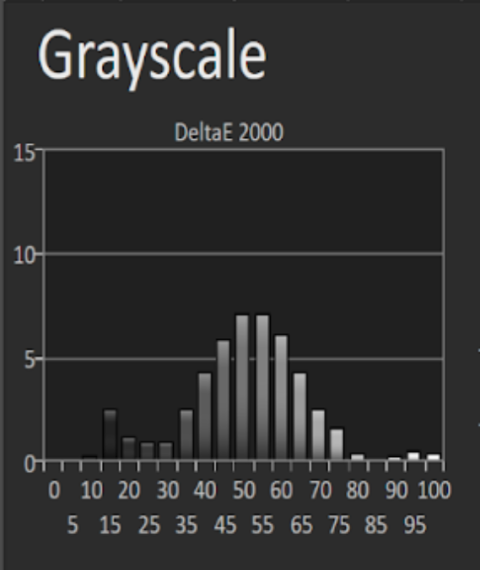
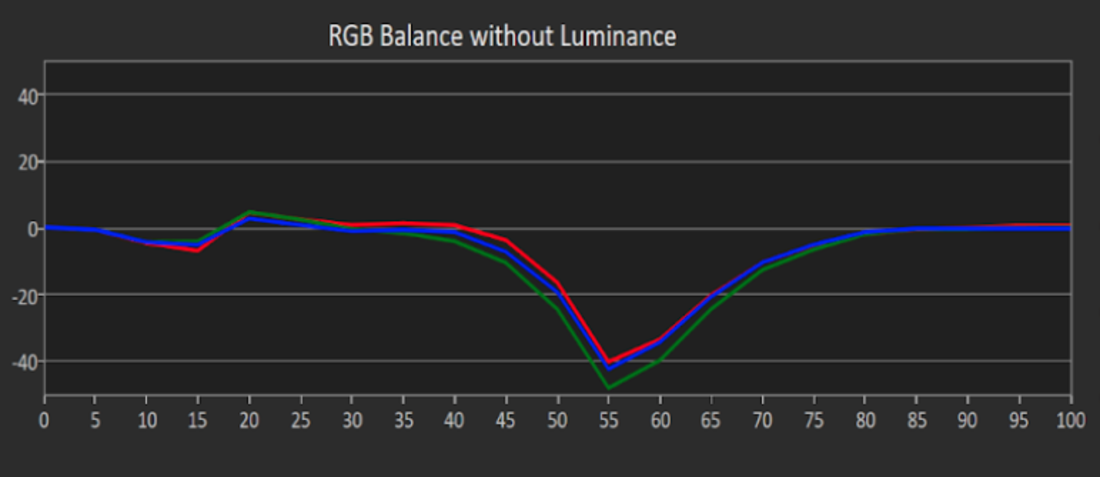
There are sixteen adjustable levels for adjustments of the HDR Brightness, which affect the ST2084 HDR curve being presented. The default setting is in the middle at 8 but it doesn’t seem to correspond to the most common HDR Mastering level of 1,000 nits. During my calibration I had to go all the way down to a setting of 1 to be closest to spec and have the EOTF follow what you see above.
I used an older Samsung UHD Blu-ray player as my primary source for evaluations with HDR this time, as that is what was available. The LS11000 rendered the HDR images coming from this source incredibly after calibration, showing scenes from Mad Max Fury Road and Spider-Man Homecoming with a very film-like, cinematic and celluloid image as mentioned a few times previously. The HDR rendering had very nice brightness, pop and depth throughout all scenes, showing that it is processing the scenes in some sort of dynamic fashion, most likely gamma manipulation based on scene content. I tested this using the great Spears & Munsil UHD Evaluation Disc and it is pretty clear this is not any real form of dynamic tone mapping like you get from the likes of a Lumagen Radiance Pro, JVC projector or MadVR Envy (which I had on hand to compare it to), but it is nice nonetheless whatever it is doing. If you are an HDR movie buff, you will really appreciate what this projector provides. It seems to have a very clean and sharp image. You start to feel like you’re actually viewing a single chip DLP, were it not for the great black levels this LS11000 provides.
SDR (Standard Dynamic Range)
Out of the box
The out of the box SDR impression didn’t bring any surprises for me with the LS11000. I did what I always do before calibration. I ran a quick pre-calibration analysis on the various modes in SDR. It was no surprise when I started off in the first Color Mode named “Dynamic”. This mode is usually always very far off of the D65 standard and it is very bright and over saturated with color. The image is usually a greenish-blue, which are the colors which provide the most brightness on projectors and all displays for that matter. One surprising thing was that this is the best out of the box mode available for HDR out of all of them, so I was hoping it would be the same result as with HDR because you can get full fade to black (FFTB) when using the dynamic dimming at High Speed. In the Natural Color (as Epson calls it) Mode, you don’t get FFTB, even if high speed dynamic dimming is engaged.
As you can see in the CalMAN SDR Calibration Workflow Charts below, the blue runs nearly flat across the RGB white balance range, but the red and green take on a strange hump, inverse of each other. The RGB Balance chart looks like a bowtie! You’ll also see that the luminance runs high atop the reference yellow curve and the colors are excessive and over-saturated, especially green. It is almost a DCI-P3 type gamut natively.

After Calibration
As soon as I got to the Natural Color mode, I knew this was the mode to use for my final SDR Calibrations. It was very close in all categories such as grayscale, gamma, colors, etc. Once I went through the calibration process in Natural Mode, the color gamut, gamma and grayscale fall right into their respective reference points.

White Balance and Grayscale
The grayscale is essentially flat throughout the “IRE” range, with small separation above ~80%, which could be expected as that is the high level where the two point White Balance was performed and the harder the light engine is driven, the harder it is to maintain this balance among the primary colors. Red is usually the first color to give out, but it surprisingly holds its own in this mode on the LS11000.
Unfortunately, while there is an 11 point white balance control, called “Grayscale” in the White Balance Menu, when I tried to use it while in Dynamic Mode, it just seemed to make things worse because when you adjust the higher settings then it appears to also affect the lower settings. It wasn’t needed once I decided to use Natural Mode, thankfully.
Gamma
The gamma is spot on through 20-60, with slight dips from 0-20 and after 60, with its lowest at 90% as it moves back to reference at 100%. This should result in nicely rendered images from 0 to 100% stimulus as all levels are at a gamma of 2.3 - 2.4. Typically you use a range of gamma from 2.2 - 2.4, depending on various display, room and viewing conditions. This result definitely shows when watching content on the LS11000 as it takes on an almost DLP-Like image, but with better blacks!

Color Gamut and Sweeps
As you can see it is slightly low in the red at its peak. This was intentionally done by me so that the red color sweeps tracked well, which is the most important factor for true color accuracy in full motion video. The rest of the saturation sweeps for the other colors render remarkably well, especially after what I’ve experienced recently with all the Ultra-Short Throw RGB Laser DLP Projectors, which most seem to have a tough time with accurate sweeps within their nice, wide color gamut peaks.

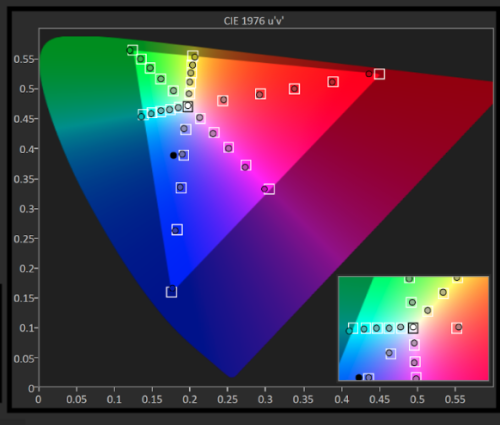
Summing Up The Epson LS11000
Summing it all up, Epson has definitely got a winner here! So much so that when I checked out the LS12000 soon after doing this review and calibration on the LS11000, I thought something was wrong with the LS12000, as it is supposed to be the higher end model of the two! It turns out my eyes weren’t deceiving me as I read that early versions of the LS12000 were known to have a very soft image. I needed to upgrade to the latest available firmware to alleviate this softness, which is said was caused by a bad eShift firmware implementation. Even after updating the LS12000, this so-called “lower end” model, the LS11000, performed admirably. You'd be hard pressed to tell the difference between them unless you have golden eyes or used measurement equipment.
It's very bright for a front standard throw, home theater projector, almost enough to be a television replacement in most rooms with some ambient light environments if you use the right screen. It's got great and accurate colors that are both bright and vivid, even if it doesn’t have the latest, widest gamut like the new RGB Laser USTs and the JVC and Sony competition at double the price which employ color filtering. It gives you a very cinematic, film-like image even with its higher brightness, without being under or over-saturated or looking like a cartoon like many newer RGB Laser USTs tend to do if they don’t have good control over their lasers.
The LS11000 is also packed with many menu settings and features that you'll find on no other projectors out there, in its class or even higher. This projector is a down-right bargain for what you get for $3,999!
In this retail cost space of many single chip DLPs and RGB laser Ultra-Short Throw projectors seemingly coming out constantly, the LS11000 and it's now passe’ blue laser phosphor light engine and eShift 4K definitely surpasses almost all of those me too under $5,000 entries and even gives the JVC and Sonys at double plus the cost a true run for their money! The only big advantages I see amongst those are the wider color gamuts of the RGB Laser USTs and the wonderful blacks and contrast of the JVC DiLAs, but as I have said many times lately……”at what cost” is it worth getting these small upgrades which are barely even noticeable in real world watching?
I have said this before with brands like BenQ, Epson really seems to care about what they produce and how it performs. They combine this incredible performance with affordable prices for the middle class, every-man who wants to have the best his budget allows without sacrificing his children’s college savings! This Epson LS11000 is showing the big boys that laser phosphor can be done at affordable prices in the non-DLP realm, and they are doing it very well!
##SETITEMBYID[144659]##
Specs
##ENDSETITEM##




